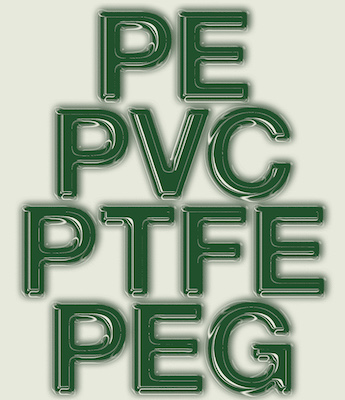PEPVCPTFEPEG

Reflections and links based on two seminars and a research trip, dealing with slow violence
mit Arbeiten von
Alexander Theis, Annette Hürter, Eleanora Pfanz, Hanna Jurisch, Jonas Zilius, Iden Sungyoung Kim, Leonie Mühlen, Minh Duc Pham, Nis Petersen, Silvie Wipfler, Vera Gärtner
Eröffnung
29. November 2019, 19 Uhr
Finissage
11. Januar 2020, 17 – 19 Uhr
Laufzeit
30. November 2019 – 11. Januar 2020
Öffnungzeiten
Freitag – Samstag, 14 - 19 Uhr
Orte
uqbar und Kronenboden
Schwedenstraße 16, 13357 Wedding
Die Ausstellung PEPVCPTFEPEG bei uqbar und Kronenboden ist das Ergebnis eines kollektiven Forschungsprozess von Studierenden der HfG Karlsruhe aus der Fachgruppe Medienkunst (künstlerische Fotografie) unter Leitung von Professor Susanne Kriemann. Die vorgestellten Arbeiten sind als Reflexionen über die anstehende Aufgabe zu verstehen, geeignete Methoden zur Dokumentation der Langzeitfolgen von „schleichender Gewalt“ (slow violence) - und unserer eigenen Verwicklungen darin - zu finden.
PEPVCPTFEPEG kombiniert in Anlehnung an eine chemische Verbindung die Polymerstrukturen von PE, PVC, PTFE, PEG zu einer monströsen Kette aus verschiedenen Kunststoffen. In der aktuellen Debatte konzentriert sich die Diskussion auf die langfristigen Auswirkungen der Mikrokunststoffe, d.h. auf die kleinen Partikel, in die sich Kunststoff zerlegt. Kunststoffe, als (halb-)synthetisch-organische Verbindungen, wurden ursprünglich wegen ihrer "Plastizität" entwickelt. Sie sind formbar und können in fast jedes beliebige Objekt eingegossen werden. Dies ist aber auch der Grund, warum Kunststoff ein sehr instabiles Material ist – Kunststoff lebt. Dem Wetter ausgesetzt und ganz besonders auf dem offenen Meer zerfällt er schnell in "Meerjungfrauentränen". Der Begriff erfasst das Dilemma, Millionen dieser bunten, kleinen Perlen weltweit an den Stränden wieder zu finden.
Es sind die kaum sichtbaren und langfristigen Auswirkungen dieser Prozesse auf das Ökosystem, die Rob Nixon unter dem Begriff „schleichende Gewalt“ (slow violence) subsumiert. Erst in jüngster Zeit ist die Mikrokunststofftechnik in der Öffentlichkeit aufgetaucht, hat sich aber schnell zu einem viel diskutierten Thema entwickelt. In zwei Seminaren der HfG Karlsruhe sowie auf einer Forschungsreise nach Sri Lanka unter der Leitung von Prof. Susanne Kriemann und Friederike Schäfer entwickelte eine Gruppe von Studierenden prozessorientierte Arbeiten zu diesen Themen. Sie analysierten und dokumentierten Momente der „schleichenden Gewalt“ in den Landschaften der südasiatischen Insel und berücksichtigten dabei ihre eigenen Beziehungen und Handlungen zu Kunststoffen in ihrem Alltag. In ihren Forschungen entdeckten sie außerdem, dass Kunststoff nicht nur zerfällt und unser Wasser und die von ihm abhängigen Lebewesen vergiftet, sondern dass er auch die Grundlage für neue Hybridformen ist, die sich in und mit dem Kunststoff entwickeln: er lebt.
Reflections and links based on two seminars and a research trip, dealing with slow violence
with works by
Alexander Theis, Annette Hürter, Eleanora Pfanz, Hanna Jurisch, Jonas Zilius, Iden Sungyoung Kim, Leonie Mühlen, Minh Duc Pham, Nis Petersen, Silvie Wipfler, Vera Gärtner
Opening
November 29, 2019, 7 p.m.
Finissage
January 11, 2020, 5 – 7 p.m.
Running time
November 30, 2019 – January 11, 2020
Opening hours
Friday - Saturday, 2 - 7 p.m.
Venues
uqbar und Kronenboden
Schwedenstraße 16, 13357 Wedding
The exhibition PEPVCPTFEPEG at uqbar and Kronenboden is the result of a collective research process by students of the HfG Karlsruhe from the Media Art (Artistic Photography) department under the direction of Professor Susanne Kriemann. The works presented here, are to be seen as reflections on the pending task of finding apt methods for a documentation of the long-term effects of ‘slow violence’—and our own entanglement.
In the manner of a chemical compound, PEPVCPTFEPEG, combines the polymer structures of PE, PVC, PTFE, PEG to one monstrous string of various plastics. In current debate, the discussion focuses on the long-term effects of microplastics, that is on the small particles into which plastic disaggregates. Plastics, as (semi-)synthetic organic compounds were originally developed because of their ‘plasticity.’ They are specifically malleable and can be molded into almost any possible object. Yet, this is also the reason that plastic is a very unstable material—plastic lives. Exposed to the weather, and especially in the open ocean, it breaks down quickly into ‘mermaid tears.’ The term captures the dilemma of the situation of finding millions of these colorful, small pearls on the beaches.
It is the hardly visible and long-term effects on the ecosystem of such processes as microplastics that Rob Nixon subsumes under the term of ‘slow violence.’ Only rather recently, microplastics has surfaced in the public, but quickly has become a much-debated concern. In two seminars of the University of Arts and Design Karlsruhe (HfG), as well as on a research trip to Sri Lanka, led by Prof. Susanne Kriemann and Friederike Schäfer, a group of students developed process-based works for recording these issues. They analyzed and documented moments of ‘slow violence’ in the landscapes of the South Asian island, while taking into consideration their own relations and actions to plastics on their very daily routines. In their research, they furthermore discovered that plastic not only breaks down, poisoning our water and the living beings that depend on it, but that it is also the basis for new hybrid-forms that develop in and with the plastic—it lives.